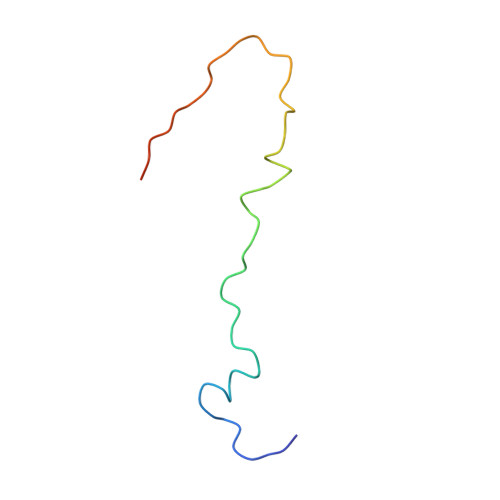Structure and genome ejection mechanism ofStaphylococcus aureusphage P68.
Hrebik, D., Stverakova, D., Skubnik, K., Fuzik, T., Pantucek, R., Plevka, P.(2019) Sci Adv 5: eaaw7414-eaaw7414
- PubMed: 31663016
- DOI: https://doi.org/10.1126/sciadv.aaw7414
- Primary Citation of Related Structures:
6IAB, 6IAC, 6IAT, 6IAW, 6IB1, 6Q3G - PubMed Abstract:
Phages infecting Staphylococcus aureus can be used as therapeutics against antibiotic-resistant bacterial infections. However, there is limited information about the mechanism of genome delivery of phages that infect Gram-positive bacteria. Here, we present the structures of native S. aureus phage P68, genome ejection intermediate, and empty particle. The P68 head contains 72 subunits of inner core protein, 15 of which bind to and alter the structure of adjacent major capsid proteins and thus specify attachment sites for head fibers. Unlike in the previously studied phages, the head fibers of P68 enable its virion to position itself at the cell surface for genome delivery. The unique interaction of one end of P68 DNA with one of the 12 portal protein subunits is disrupted before the genome ejection. The inner core proteins are released together with the DNA and enable the translocation of phage genome across the bacterial membrane into the cytoplasm.
Organizational Affiliation:
Central European Institute of Technology, Masaryk University, Kamenice 5, 625 00 Brno, Czech Republic.















